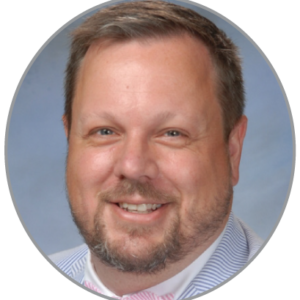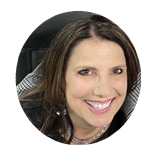
Starting with our August 2021 issue, we have been following a group of school leaders as they led their school communities through a year of rebuilding after the disruptions encountered in the 2020–2021 school year. While their schools, locations, and experiences have been very different from each other, they all share a strong, schoolwide commitment to social and emotional learning and to supporting student and teacher success. In this last installment, three of our school leaders reflect back on their SEL journey and look forward to where it will lead in the future.
Reflect on the SEL journey your school community has taken this year. What changes have you seen in your community (students, educators, caregivers, administrators) that connect to your thoughtful work in social and emotional learning?
Leslie Paynter: Our students and staff have begun to change the way they view challenges and setbacks. Students and staff are demonstrating perseverance, accepting feedback and critique, and finding inspiration in the success of others. We continue to see improvement in students’ ability to self-regulate and have greater control over their emotions, which has led to increased positive peer and adult interactions.
Furthermore, the majority of our families now understand and support our practice of logical consequences and accountability, the philosophy of “if you break it, you fix it,” and the belief that it’s okay for children and adults to make mistakes.
Trey Veazey: Our intentionality around the social-emotional aspect of not only child development but also of just being humans certainly ran up against nefarious counteractions fueled by the pandemic, job creep, and burnout. Although there are certainly aspects where we did well, my takeaway for the year is that this work has truly inspired a reflective practice that is more intensely aware. That recognition, both spherical and specific, generated growth in multiple areas and set us up for continued progress. As a community, we have found a new type of cohesion, and while one could posit that such fondness for being together could be for a number of reasons, it is a good feeling. And good feelings are great places for continuing the conversation.
Aliza Kadish: We started slowly and have seen some dramatic changes, especially in our K–2 students. Teachers have a common language to use with students, as do I, which helps students reflect on their behavior and gives them a larger social-emotional vocabulary to use when discussing their feelings. I overhear students say to each other, “That was not respectful” or “If you cooperated, you would like what happened.” Our middle school students are using the five core competencies to write essays of five to seven paragraphs to truly reflect on what they have learned and how they will use these skills moving forward. We are building solid foundations that will be built on over time.
What are your SEL hopes and goals for your school community next year?
Leslie Paynter: My SEL hope and dream for next year is to continue our work to improve the growth mindset of our staff and students. We want to foster this practice throughout the school so that when children and adults encounter a difficult situation, they can recognize how they react is a choice and can shift their language from “I can’t” to “I can.” Instead of running away from failures and giving up when faced with a setback, we should have the ability to reflect and identify what didn’t work, discuss why it didn’t work, and develop a plan to correct the mistake. My desire is for everyone—adults and children—to become comfortable with constructive feedback and reflection.
Trey Veazey: I want our teachers to feel more confident in embedding SEL work into their classrooms. This is not a comment on their professional practices as much as it is a desire to help support their continued development in this realm. I am growing as a leader, and I want success for them, too. It all translates to better helping our students become successful humans. I would love to dig in and do some creative, out-of-the-box thinking about where SEL fits symbiotically even if we have never really thought of certain components in varied ways.
Aliza Kadish: I hope that we can look back on the pandemic and allow ourselves to address the true social and emotional needs of the students. We also hope to formally incorporate the families using the School-to-Home Connections toolkit. One of our top-line goals is to increase parent engagement by offering classes for parents to show the ways they can help their child be academically, socially, and emotionally successful.
What actions are you planning to implement next year to work toward these SEL goals?
Leslie Paynter: So that feedback and reflection become an integral part of what we do, we want to provide more opportunities for students and staff to critique each other. Our three rules of critique are:
- Be Kind: The critique environment should feel safe. You must be vigilant to guard against any hurtful comments.
- Be Helpful: The goal is to help the person or the class, not for the critic to be heard.
- Be Specific: We avoid comments such as “It’s good” or “I like it.” These are vague and offer no insights.
Kind feedback gives a compliment, helpful feedback gives a suggestion, and specific feedback tells where to apply the suggestion. We often say, “Easy on the person, hard on the content.”
Teachers give critiques to students throughout the school day, and the strategies of critique, revision, and the use of work models are deeply embedded in project-based learning and support students in producing high-quality work. Therefore, our goal is to make critique a habit of mind that infiltrates the classroom in all subject areas for our students, in addition to our staff growing more comfortable with giving and receiving feedback and reflection.
Trey Veazey: Planning, planning, planning! I am looking forward to folding our faculty and staff into conversations about how they want to see their SEL professional capacities built up. Our work is most effectively done when we have an investment that is both personal and pragmatic. Listening to the diagnostic needs of our community will help us find success in the prescriptive piece. I can hardly wait to foster new connections and build relationships across the board. I love caring for people, and I am so grateful to have a job in which that is necessary.
Aliza Kadish: One way that we are hoping to achieve our goal is to appoint a teacher as a Fly Five mentor. This teacher will work one-on-one or in small groups with other teachers to navigate the curriculum, adapt lessons as needed, and work through challenges. Fly Five will again be on the schedule at designated times to stress its importance. When the calendar is distributed to parents, it will list BHPS University class dates and topics so parents can plan accordingly. I will set the agenda and incorporate parent feedback as we move along.
Is there anything else you would like to share about what’s happening with SEL in your school community?
Aliza Kadish: Fly Five has been a wonderful addition to our school. I can’t remember what it was like before we implemented Fly Five and can’t imagine Fly Five not being part of our school day.

Aliza Kadish—Principal, Beacon Hill Preparatory School, Miami Gardens, FL

Trey Veazey—Assistant head of Lower School, The Walker School, Marietta, GA

Leslie Paynter—Managing director/principal of Alamance Community School, Haw River, NC
